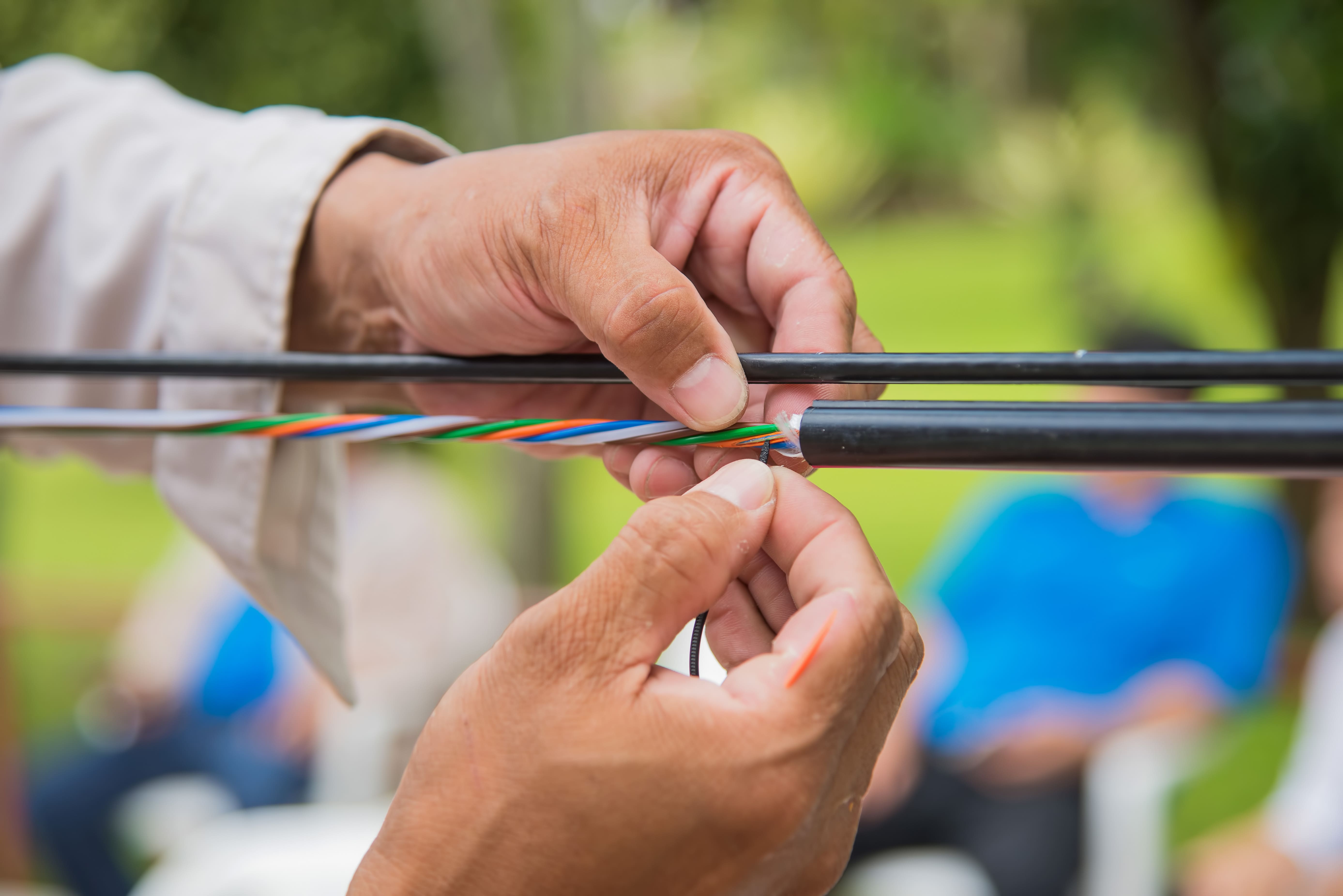Across the telecom and wireless industry, the news is all about 5G. The cellular world is racing toward 5G and telecom infrastructure, such as small cells, are making headlines. 5G is important for our connected future and, certainly, small cells are a big part of it. We are seeing greater demand for throughput and connectivity. Consumers on their cell phones and other connected devices want high speeds and low latency from their wireless network. But, the technology we experience on those wireless networks has always been supported by wired infrastructure.
The wired infrastructure that will support future connectivity is fiber optic cable. Wireless networks depend on fiber backhaul connections to cell sites. Nearly all wireless traffic is traveling over a backbone of fixed fiber networks. 5G services won’t be successful without an expansive fiber network to handle the traffic generated through 5G connections.
What is fiber optic cable?
Compared to traditional copper cabling, fiber optic cable is simply better. Utilizing light, fiber optic cable is better at transmitting data long distances and providing a higher speed connection. Fiber networks provide greater bandwidth, are more reliable and have a lower total cost of ownership. All of these features make fiber the perfect partner to support the development and growth of future wireless networks.
Fiber is integral to 5G and small cell success
Most of the data we demand from our wireless devices is actually traveling on wired fiber networks. The part of the journey that is wireless is only the last part of the connection — most of the journey is not wireless. Data travels from your mobile device to the cell tower, small cell, or wifi router, and fiber takes it the rest of the way. For example, if you are sending an email from your phone in San Francisco to a colleague in London, your message is traveling only, at the most, a couple of miles wirelessly. The rest of that journey is across five thousand miles of fiber. Without a strong and expansive fiber network that email would not make it far.
Fiber’s irreplaceable role in making 5G a reality cannot be overstated. According to a survey conducted by the Telecommunications Industry Association (TIA), 5G operators consider fiber important for 5G backhaul, with 83 percent of respondents saying fiber is “very important.” This is due to the fact that initial small cell deployments often use high-density millimeter wave spectrum (mmWave) and rely heavily upon a high-speed fiber optic cabling for backhaul.
Deploy and maintain fiber networks successfully
Fiber is the backbone to the wireless infrastructure of the future. Fiber networks are going to continue to grow and expand their reach. It is one of the largest ongoing and high volume projects for the telecom industry and it will need to cover hundreds of thousands, if not millions, of miles. Expansive fiber networks are going to need to span the globe, traveling under oceans, and connecting billions of mobile devices.
Fiber network providers are not going to be able to meet deployment and maintenance demands using spreadsheets and legacy software. Geographically dispersed teams need a project management solution that provides standardization and automation across processes. Sitetracker is the project management solution that provides organizations with real-time updates on high volume fiber and telecom projects. Demo the Sitetracker platform to learn how to effectively manage teams and workflows for high volume project management.
